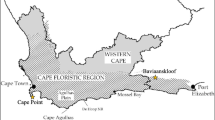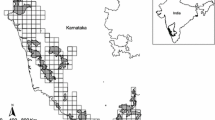Abstract
We consider a continuous-time proportional hazards model for the analysis of ecological monitoring data where subjects are monitored at discrete times and fixed sites across space. Since the exact time of event occurrence is not directly observed, we rely on dichotomous event indicators observed at monitoring times to make inference about the model parameters. We use autoregression on the response at neighboring sites from a previous time point to take into account spatial dependence. The interesting fact is utilized that the probability of observing an event at a monitoring time when the underlying hazards is proportional falls under the class of generalized linear models with binary responses and complementary log-log link functions. Thus, a maximum likelihood approach can be taken for inference and the computation can be carried out using standard statistical software packages. This approach has significant computational advantages over some of the existing methods that rely on Monte Carlo simulations. Simulation experiments are conducted and demonstrate that our method has sound finite-sample properties. A real dataset from an ecological study that monitored bark beetle colonization of red pines in Wisconsin is analyzed using the proposed models and inference. Supplementary materials that contain technical details are available online.
Similar content being viewed by others
References
Aukema, B. H., Zhu, J., Møller, J., Rasmussen, J., and Raffa, K. F. (2010), “Predisposition to Bark Beetle Attack by Root Herbivores and Associated Pathogens: Roles in Forest Decline, Gap Formation, and Persistence of Endemic Bark Beetle Populations,” Forest Ecology and Management, 259, 374–382.
Banerjee, S., Carlin, B. P., and Gelfand, A. E. (2004), Hierarchical Modeling and Analysis for Spatial Data, Boca Raton: Chapman and Hall/CRC.
Box, G., Jenkins, G. M., and Reinsel, G. (2008), Time Series Analysis: Forecasting and Control (4th ed.), New York: Wiley.
Cox, D. R. (1972), “Regression Models and Life-Tables” (with discussion). Journal of the Royal Statistical Society, Series B, 34, 187–220.
Cressie, N. (1993), Statistics for Spatial Data (Revised ed.), New York: Wiley.
Diggle, P. J., and Ribeiro, P. J. (2007), Model-Based Geostatistics, New York: Springer.
Erbilgin, N., and Raffa, K. F. (2002), “Association of Declining Red Pine Stands With Reduced Populations of Bark Beetle Predators, Seasonal Increases in Root Colonizing Insects, and Incidence of Root Pathogens,” Forest Ecology and Management, 164, 221–236.
Fahrmeir, L., and Tutz, G. (2001), Multivariate Statistical Modelling Based on Generalised Linear Models (2nd ed.), New York: Springer.
Klepzig, K. D., Raffa, K. F., and Smalley, E. B. (1991), “Association of Insect-Fungal Complexes With Red Pine Decline in Wisconsin,” Forest Science, 41, 1119–1139.
McCullagh, P. (1980), “Regression Models for Ordinal Data” (with discussion). Journal of the Royal Statistical Society, Series B, 42, 109–142.
McCullagh, P., and Nelder, J. (1989), Generalized Linear Models (2nd ed.), Boca Raton: Chapman and Hall/CRC.
Nathoo, F. S. (2010), “Joint Spatial Modeling of Recurrent Infection and Growth With Processes Under Intermittent Observation,” Biometrics, 66, 336–346.
Piegorsch, W. W. (1992), “Complementary Log Regression for Generalized Linear Models,” The American Statistician, 46, 94–99.
Rasmussen, J. G., Møller, J., Aukema, B. H., Raffa, K. F., and Zhu, J. (2007), “Bayesian Inference for Multivariate Point Processes Observed at Sparsely Distributed Times,” Journal of the Royal Statistical Society, Series B, 69, 701–713.
Wikle, C. K., and Hooten, M. B. (2006), “Hierarchical Bayesian Spatio-Temporal Models for Population Spread,” in Applications of Computational Statistics in the Environmental Sciences: Hierarchical Bayes and MCMC Methods, eds. J.S. Clark and A. Gelfand, Oxford: Oxford University Press.
Zheng, Y., and Zhu, J. (2008), “Markov Chain Monte Carlo for a Spatial-Temporal Autologistic Regression Model,” Journal of Computational and Graphical Statistics, 17, 123–137.
Zhu, J., Rasmussen, J., Møller, J., Aukema, B. H., and Raffa, K. F. (2008), “Spatial-Temporal Modeling of Forest Gaps Generated by Colonization From Below- and Above-Ground Bark Beetle Species,” Journal of the American Statistical Association, 103, 162–177.
Author information
Authors and Affiliations
Corresponding author
Electronic Supplementary Material
Below is the link to the electronic supplementary material.
Rights and permissions
About this article
Cite this article
Lin, FC., Zhu, J. Continuous-Time Proportional Hazards Regression for Ecological Monitoring Data. JABES 17, 163–175 (2012). https://doi.org/10.1007/s13253-011-0081-7
Published:
Issue Date:
DOI: https://doi.org/10.1007/s13253-011-0081-7




